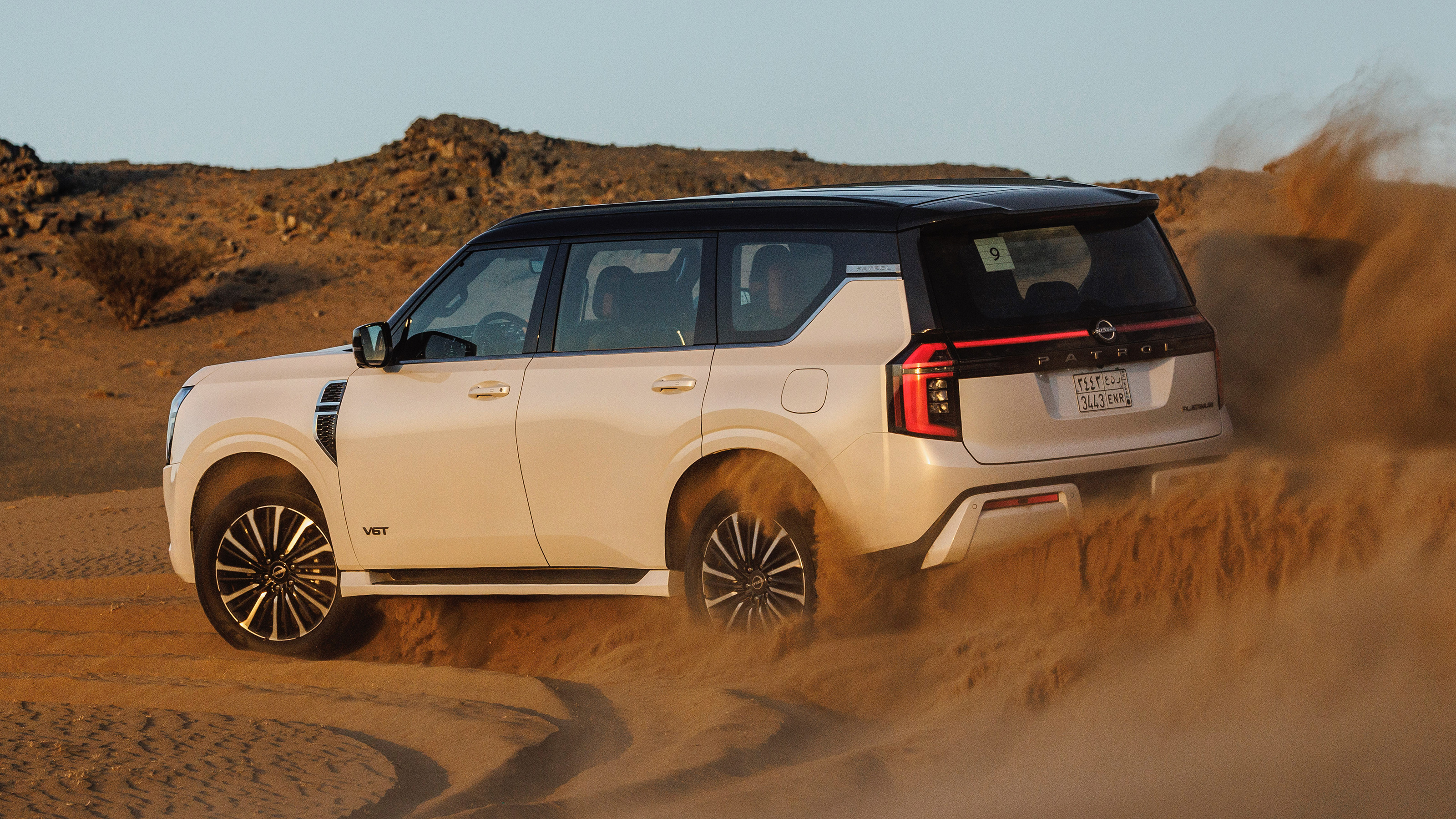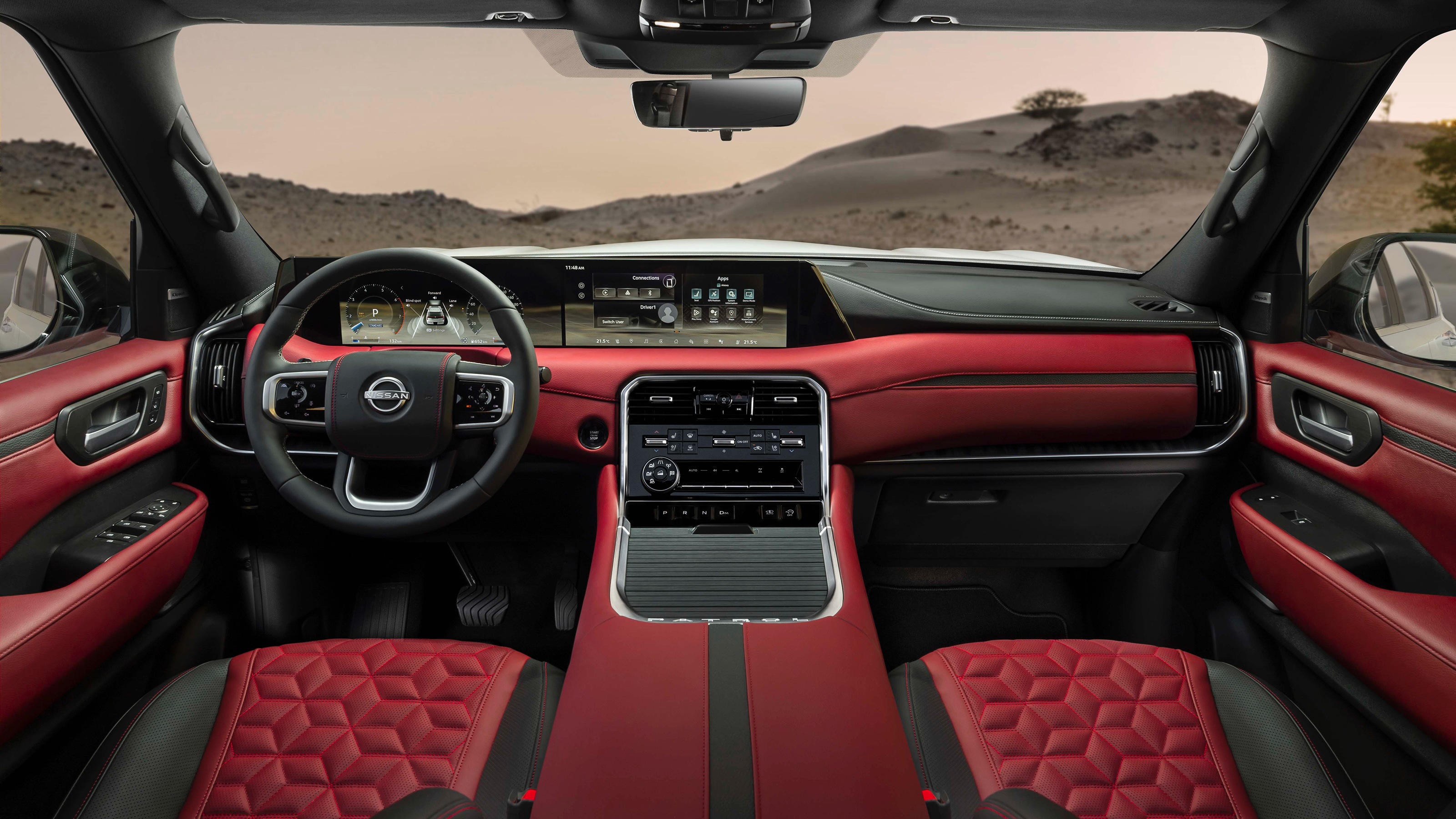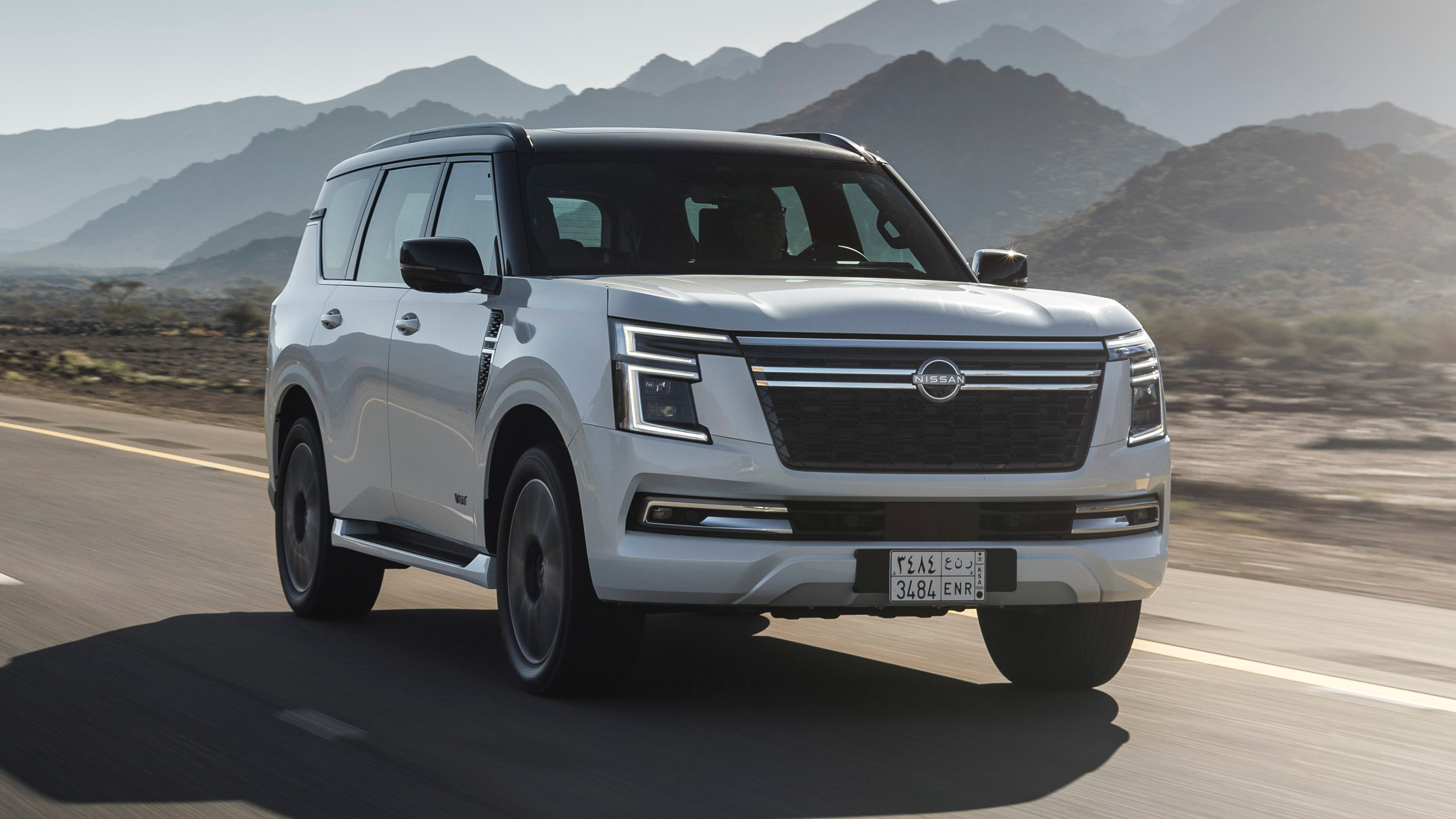
Nissan Patrol review
Interior
What is it like on the inside?
Prepare for a tangent. Do you know where Nissan’s first ever dealership outside of Japan was? Kuwait. That was in 1952. And do you know why the Middle East really took the Patrol to its heart? Yeah, there’s the whole thing about the royal families buying Patrols, which meant those that wanted to curry favour quickly followed suit.
But the reason the royals went for the big Nissan in the first place? Air conditioning. That arrived with the third-generation car in 1980, Nissan realising that powerful, reliable aircon was essential here. The system is a complete monster. You can leave the Patrol outside in the sun for hours, but within a couple of minutes of getting in, the sauna will have turned into an ice bath. Effective seat cooling too.
Does it come across as a car suitable for royalty?
Can’t see our own monarch being persuaded by the cheap plastics, basic stitching and astonishing lack of marquetry, because by the standards not only of Bentley and Rolls, but even Audi, Merc and BMW, the Patrol isn’t a smart or luxurious car. It’s the trim and materials that let it down – everywhere the designers could have got more creative, they’ve instead gone for practicality. Loads of storage, less surprise and delight.
It’s very much posh Nissan in here. There’s all the toys you’d ever need in top-spec versions: big, comfy, massaging chairs, a central fridge, twin 14.3-inch screens, surround cameras with clear bonnet technology, 64 colours of ambient lighting, even Biometric cooling where infrared sensors check your temperature in the car and adjust the heating accordingly.
How’s the cabin space?
Large enough to stage an inter-village tug of war. Fold all the seats down and the 2,680-litre volume is positively van-sized. As we pointed out in the Overview, with all seven seats up, its 623-litre boot is double what most family SUVs offer. No passenger, no matter what row they find themselves in, has any cause for complaint. It’s well thought out too – not quite to Volvo levels, but near enough.
But so it should be given it’s as long as a stretched Merc S-Class, and wider than most hypercars. Here’s another reason it’s not coming to Europe: it doesn’t fit.
Is it easy to use for the driver?
Crucially, yes it is. The screens are actually pretty basic despite the large swathe of dash they occupy – not good if you want to be dazzled by swirling graphics, but who wants that when they’re driving? Simplicity is effective, and the layout here is easy to get on with. And yes, there are plenty of actual physical buttons and controls.
Featured

Trending this week
- Car Review
BMW iX3






